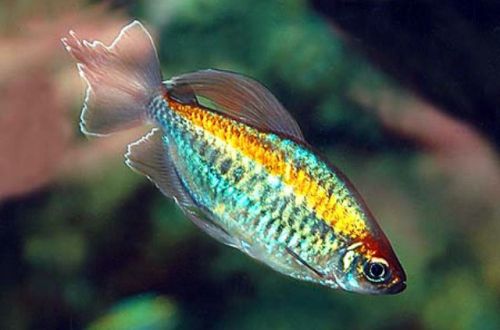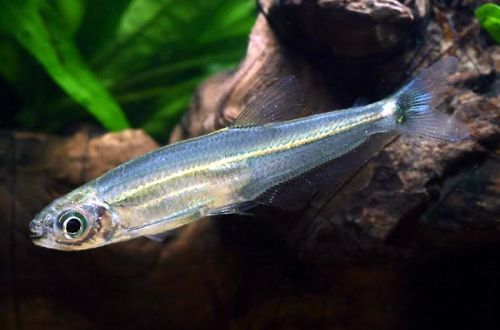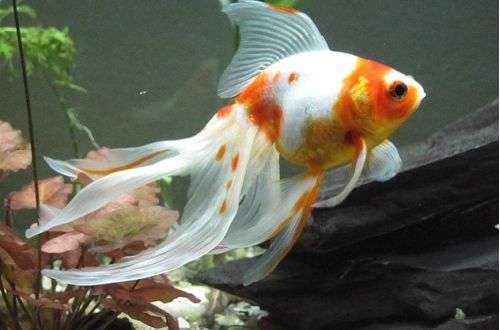
Tetra-Congo
Tetra Congo, scientific name Phenacogrammus interruptus, belongs to the Alestiidae family. This is one of the most beautiful species among African characins. The body shimmers with all the colors of the rainbow, and wide veil fins develop beautifully when moving in the water.

Habitat
The species was first described by explorer Georges Albert Boulanger in 1899 during an African expedition. Fish found in Africa, in the upper basin of the Congo River, live in acidic and dark waters. In the wild, they prefer to stay in small groups, feed on worms, crustaceans, insects and plant foods.
Description
Tetra-Congo has a typical shape for tetras of large sizes. The male can reach up to 8,5 cm in length, and the female – up to about 6 cm. Life expectancy in home aquariums is from 3 to 5 years. The body coloration is iridescent, ranging from bluish dorsally to red-orange and golden yellow on the flanks, and again to bluish on the belly. The fins are translucent, gray-violet, lighter at the edges.
Food
In a home aquarium, they can be classified as omnivorous fish. The diet includes all types of live, dry and plant foods, in order to maintain an optimal balance, it is necessary to supply high-quality dry food (natural or frozen), as well as “spoil” with bloodworms, small earthworms. Herbal supplements (vegetable flakes, chopped lettuce or spinach leaves) are recommended to be fed on a regular basis, otherwise there is a risk of damage to the leaves and shoots of plants in the aquarium.
Maintenance and care
The Congo Tetra has been massively bred for commercial purposes and has been successfully adapted to life in the artificial aquarium environment for many decades. A prerequisite is clean water and good circulation. A performance internal filter solves both of these problems. At least 25 – 50% of the water should be renewed every two weeks. The minimum set of equipment consists of a filter, an aerator, a heater and a low power lighting system.
This species prefers dense vegetation along the walls of the aquarium and dark soil. It is necessary to use river sand as a substrate, and driftwood, pieces of wood, intertwined roots, etc. can act as decorative elements. Adding a few dry leaves will color the water in a light brown color, which is typical for a natural habitat. They should be replaced every two weeks.
Social behavior
The content in the group is at least 4-5 individuals. They are generally great for coexisting with other aquarium civilians, but can be aggressive and bite smaller fish. The best aquarium mates for the Congo Tetra are peaceful cichlids, catfish. Do not keep together with fish that bite fins, they can injure tetras, such species include, for example, Barbs.
Breeding / breeding
Breeding is quite simple with an additional tank. A spawning aquarium with a size of 40 liters successfully copes with its task. The water should match the parameters of the main aquarium. From the equipment – a filter, a heater and a lighting system. Plants with large and small leaves are required in the design.
The stimulus for spawning is a change in the pH parameter to the acid side up to 6 units and an increase in the brightness of the lighting. When the first pair is formed, it is placed in a separate tank, where spawning takes place. The female lays about 300 eggs on the ground covered with leaves. The fry appear during the day and are already able to absorb food. Do not forget to remove the parents immediately after spawning, they are prone to eating their own eggs.
Diseases
The Congo Tetra is quite hardy and usually does not get sick if kept well. Read more about symptoms and treatments in the Aquarium Fish Diseases section.





